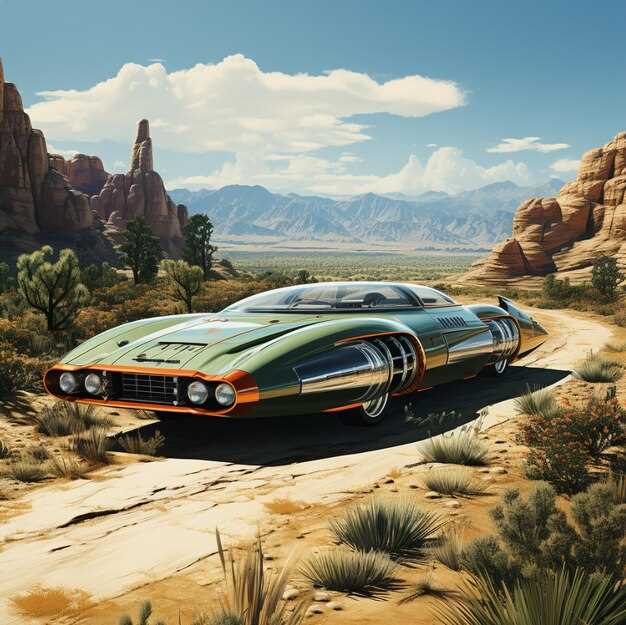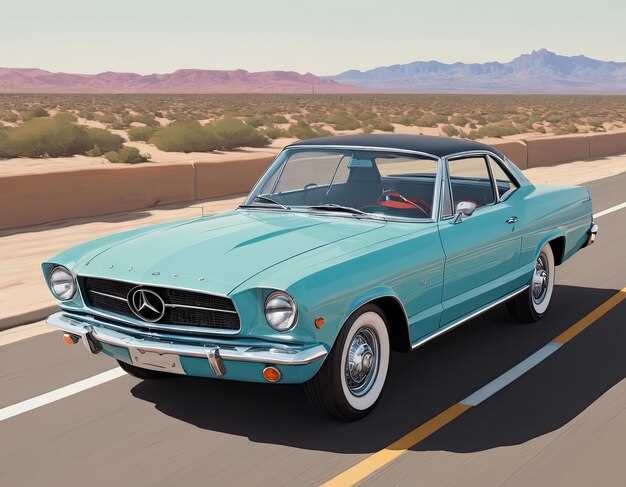
The Ford Mustang, an iconic symbol of American muscle cars, has left an indelible mark on the automotive landscape since its debut in 1964. This remarkable vehicle was not merely a car; it represented a cultural shift that emphasized freedom, power, and the spirit of the open road. Its unique blend of performance and style attracted a passionate following and set the standard for a new class of automobiles, known as the pony car.
Over the decades, the Mustang has continually evolved while retaining the core elements that made it a classic. Ford has skillfully balanced innovation with tradition, ensuring that each generation resonates with both new enthusiasts and seasoned collectors. The Mustang’s design and performance features have inspired countless manufacturers, solidifying its status as a benchmark in classic car history.
As we explore the enduring influence of the Ford Mustang, we will delve into its significant contributions to the muscle car segment, examining how it shaped the automotive industry and popular culture. The story of the Mustang is not just about horsepower and speed; it is a testament to American ingenuity and the passion of car lovers around the globe.
The Evolution of the Ford Mustang: Key Generations
The Ford Mustang made its debut in 1964 and quickly became a symbol of American automotive culture. The first generation, produced from 1964 to 1973, established the Mustang as a powerful and stylish car. Its long hood, short rear deck, and extensive customization options appealed to a broad audience, making it an instant classic.
The second generation emerged in 1974, adapting to the changing market and fuel crisis. This version, known as the Mustang II, was smaller and more fuel-efficient. Though it faced criticism for straying from the original’s muscle car roots, it helped keep the Mustang brand alive during a challenging period for American automakers.
The third generation arrived in 1979 with a modern redesign that offered improved performance and technology. This era saw the introduction of turbocharged engines and a focus on a sportier driving experience. The Mustang began to reclaim its status as a performance car, appealing to a new generation of enthusiasts.
The fourth generation, introduced in 1994, brought a complete overhaul with a focus on power and aerodynamics. With a return to classic styling cues and innovative features, the Mustang attracted both loyal fans and new buyers. This generation reaffirmed the Mustang’s place in car history, especially with the introduction of the SVT Cobra model, which offered enhanced performance.
The fifth generation was launched in 2005, featuring a retro-inspired design that referenced the original models while integrating modern technology. This fresh take on the Mustang not only appealed to older fans but also attracted younger drivers, ensuring the car’s ongoing relevance in a competitive market.
The sixth generation debuted in 2015, showcasing advancements in engineering, safety, and design. With an independent rear suspension and a more sophisticated powertrain lineup, the Mustang continued to excel in performance. Additionally, Ford introduced the EcoBoost engine option, catering to those seeking a balance of power and fuel efficiency.
Throughout its history, the Ford Mustang has evolved with the times while maintaining its core identity as an iconic American car. Each generation reflects changing consumer preferences and technological advancements, demonstrating the Mustang’s ability to adapt while still honoring its storied past.
How the Mustang Shaped the Muscle Car Culture

The Ford Mustang emerged in the mid-1960s, revolutionizing the automotive landscape and giving rise to the muscle car culture. With its powerful performance, distinctive styling, and affordable price, the Mustang became an icon overnight, appealing to a generation eager for freedom and speed. This vehicle did not just offer power; it embodied the spirit of rebellion and individuality that characterized its era.
The introduction of the Mustang in 1964 created a new segment known as the “pony car,” which emphasized style and performance at an accessible price point. Competitors quickly joined the fray, introducing their own models, but the Mustang set the standard. The combination of a strong V8 engine, lightweight construction, and agile handling allowed drivers to experience exhilarating performance, solidifying the muscle car’s place in American culture.
Furthermore, the Mustang’s involvement in motorsports and popular media, including its memorable appearances in films such as “Bullitt,” further cemented its status as a cultural icon. Its presence on the racetrack and film screen showcased the Mustang as a symbol of power and excitement. This visibility inspired countless enthusiasts and car clubs, reinforcing a community around muscle cars and cultivating a lasting legacy.
The impact of the Ford Mustang on the muscle car culture extended beyond its initial launch. As the model evolved through the decades, it continually influenced trends in design and performance within the automotive industry. New generations maintained the characteristics that fans loved while incorporating modern technology, ensuring the Mustang remained relevant.
In conclusion, the Ford Mustang not only defined the muscle car genre but also shaped the culture surrounding it. Its blend of style, power, and accessibility has left an indelible mark on automotive history, inspiring generations of car lovers and solidifying its position as a cornerstone of American muscle car culture.
Current Collector Trends: The Mustang’s Role in the Classic Car Market

As the classic car market evolves, Ford Mustang continues to hold a significant position among collectors and enthusiasts. This iconic muscle car symbolizes an era marked by performance, style, and American engineering prowess. The Mustang’s enduring appeal can be attributed to its diverse lineup and the various modifications that cater to a wide range of collector preferences.
Currently, there is a noticeable trend towards the appreciation of early models, particularly from the 1960s and 1970s. These first-generation Mustangs are sought after for their authentic designs and classic muscle car performance. Enthusiasts are increasingly willing to invest in well-preserved or restored examples, recognizing their potential as both a nostalgic symbol and a worthwhile investment.
Moreover, the rise of online auction platforms has transformed the way collectors buy and sell classic cars. Mustangs, in particular, have a robust presence in these digital marketplaces, enabling wider visibility and accessibility for buyers. This shift has led to an increase in auction activity, with specific models fetching impressive prices, underscoring the Mustang’s status as a desirable asset in the classic car investment landscape.
Restomod projects also represent a key trend within the Mustang collector community. These builds blend classic aesthetics with modern performance technologies, appealing to a new generation of muscle car lovers. By integrating contemporary engines, suspension systems, and electronic features, restorers create a driving experience that resonates with both old-school charm and modern convenience.
In addition to domestic interest, international demand for classic Mustangs is on the rise. Collectors from different countries seek the quintessential American muscle car, recognizing its cultural significance and performance legacy. This global appeal ensures that the Mustang remains a prominent player in the collectible car market, reflecting its timeless influence.
In conclusion, the Ford Mustang continues to shape collector trends in the classic car market. Its historical importance, combined with evolving preferences for restoration and modernization, solidifies its legacy as a quintessential muscle car that captivates both seasoned collectors and newcomers alike.
